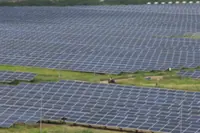Kasturi Nathan, Governance, Regulatory and Sustainability Services Leader, Deloitte Malaysia
GREEN hydrogen – the process of producing hydrogen through electrolysis powered by renewable energy (RE) sources – is poised to help drive the bulk of growth in sustainable energy, according to Deloitte’s new report “Green hydrogen: Energising the path to net zero. Deloitte’s 2023 global green hydrogen outlook.”
Hydrogen supply currently relies almost entirely on natural gas reformation and coal gasification, which are highly carbon intensive. The real breakthrough lies in the potential of clean hydrogen to decarbonise the current supply and develop new end uses at scale.
Already a subscriber? Log in
Save 30% OFF The Star Digital Access
Cancel anytime. Ad-free. Unlimited access with perks.





